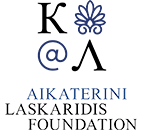Cannons (42 Subjects)
Drawings of the cannons of the Dardanelles fortresses.
Map of Nicosia, Cyprus, during its siege by the Ottomans (1570).
The Castle of Sopoto (today Borshi) besieged by the Venetians in 1570.
The fortress of Porto Kagio besieged by the Venetians in 1570.
The Castle of Margariti being besieged by the Venetians (1571).
The fortress of Margariti in Epirus, during the Venetian siege of 1571.
The fortress of Sopot (in today's Borsh, Albania) besieged by the Venetian army and fllet in 1570.
Frontispiece. Allegory of author's voyage.
The Propylaea from the west. The Ottoman commander of the city garrison (Disdar aga), with a dervish. On the right, a Greek who is held prisoner.
View of the Propylaea of the Acropolis of Athens.
View of the interior of D'Amboise Gate in the medieval city of Rhodes.
Kapudan Paşa, admiral of the Ottoman fleet.
View of Istanbul from Maiden's Tower. In the foreground imperial boats are departing from Topkapi Palace. In the first view, the Ottoman Sultan; in the second, some Ottoman princes.
View of Tophane.
Monument built on the site of the barrack where according to tradition Peter the Great stayed at during his visit to Derbent in modern-day Daguestan, in 1822.
View of Kotor in Montenegro, with the fortress of Saint John.
View of the fortress of Borsh, or Castle of Sopot, in Albania.
The Venetian army at Qeparo, Albania, during the siege of Sopot.
The Castle of Oitylon in Mani.
View of Famagusta as the city prepares its defense against the Ottoman attack, 1570.
View of the Great Fortress of Chandax (Heraklion) together with the Kules Fortress, also known as Rocca a Mare.
View of Chandax, in 1667-1668, and during it siege by the Ottomans. After being besieged for twenty-four year (1645-1669), Crete became part of the Ottoman Empire (1669).
Map of central Crete. After being besieged for twenty-four years, Crete bacame part of the Ottoman realm in 1669. In the foreground, scene from the naval battle of March 1668 between the Ottoman and the Venetian fleet, outside Chandax. General Morosini and Ottoman officials captivated.
Illustration for the poem of Lord Byron "The Siege of Corinth": Ottoman official and Greek slave girl at the ruins of the Temple of Apollo in Ancient Corinth.
View of the Castle of Komárno (Slovakia).
The Sultan's tent, in the course of a military campaign.
Map of Istanbul, showing some of the city's main sights: A. The Plataean Tripod at the Byzantine Hippodrome B. The Column of Arcadius C. The Patriarchate of Constantinople D. The church of Hagioi Apostoloi, Istanbul. E. Atik Mustafa Pasa Mosque at the area of Vlacherna, initially a church built in the Byzantine era; its original dedication remains unknown. F. Cannons used in Suleiman I's campaigns to Belgrade, Rhodes and Budapest.
The Ottoman army camps outside Vienna, during the Second Siege of Vienna in 1683.
Battle of Vienna, 1683: Polish and Austrian regiments of the Holy League attack the Ottoman army.
View of Szolnok, Hungary. In the foreground local inhabitants prepare for to fight against the Ottomans (Second Siege of Vienna).































